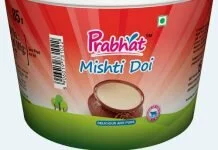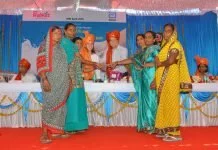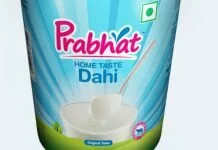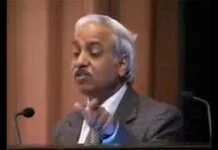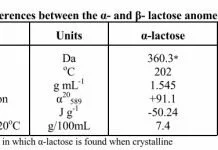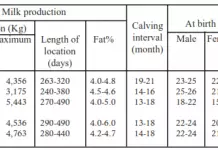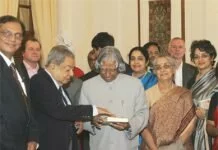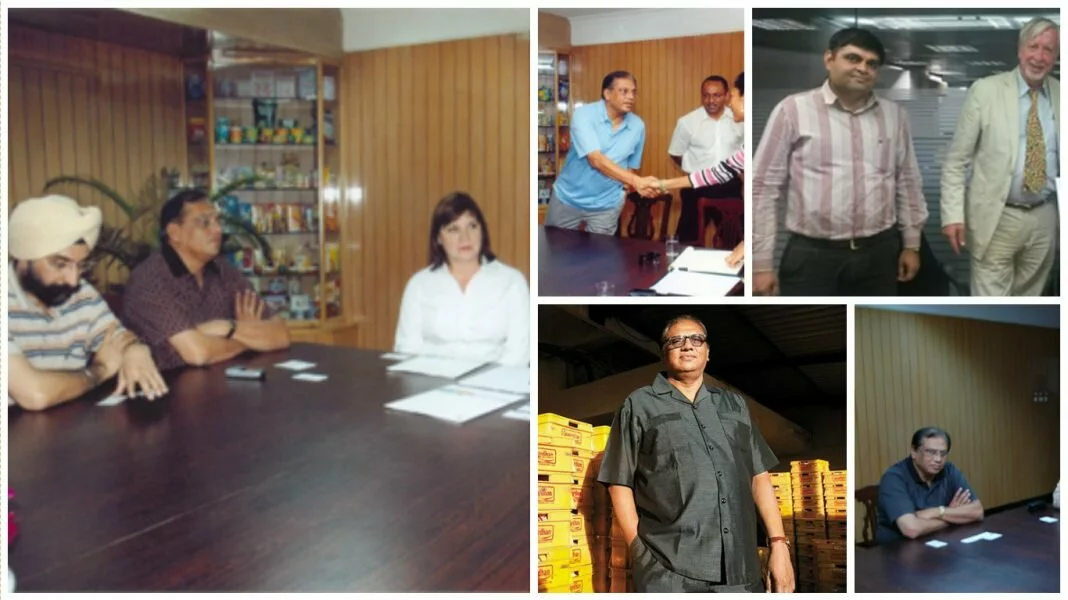Building Distribution Network Needs a Dream
Most multinational companies have decades of successful experience marketing their products and building distribution networks. Yet they often fail when they fail to adopt their marketing mix to local conditions and end up with sub optimal results, delays and then finally re-launches. Wherever modern format stores dominate, the manufacturers role is limited to research, product development, manufacturing and brand management. Distribution, which is core to your success if often handed over to the modern format stores to innovate and manage. But building a Distribution network is very much like building an organisation. When we get visitors at Amul, and they see the mini movie clips of the history of Amul, they think that Amul’s distribution network was built over night and so also its products portfolio, which is not the case. In fact, Amul had outsourced distribution in the beginning as it sent milk in rail tankers; run by the railways, from Anand (Gujarat) to the metro city of Mumbai as part of the Greater Bombay Milk Scheme from 1946 to 1980!
It was marketing of milk in local markets in Milk Cans through consumer cooperative societies set up by consumers in the neighbouring towns of Anand, Nadiad, V V Nagar that led to establishment of Amul’s own distribution network.
As Dairy Cooperatives came up in neighbouring cities of Vadodara and Surat, Amul supplied milk to them when short in summer and accepted the extra milk collected in winter – helping these cooperatives sustain local markets. It also helped the government set up a Municipal Dairy in Ahmedabad and supplied milk to them for consumer marketing.
From 1946 to 1956 the sole attention was to expand milk procurement and selling in market of Mumbai through Greater Mumbai Milk scheme. When Amul decided to put up a state of art dairy plant, the decision was made so as to create capacity to make milk powder and also manufacture butter and ghee. It was at this stage that Dr. Kurien appointed an ad agency and brand “Amul” was coined for marketing purposes. Amul ghee was launched in tin cans and butter in 100g and 500g foil packs. To prevent early melting, the team improvised the packaging by adding an extra cardboard carton on top of the foil.
But such products need refrigerated transport and storage and in those days, developing a cold chain was a big problem. Ingenious technologist developed a solution – insulated Vans with an ice box cavity at the rear to keep temperature low during transport. Soon after a distributor was appointed in Mumbai to distribute butter and ghee. In 1960 Amul cheese was launched and then exclusive selling agreements were entered into with Spencer’s in south of the country, Om Prakash and sons in North, with Voltas in West and another party in the East.
Until now Amul was manufacturing skim milk powder and whole milk powder – which for the record, was made for the first time using buffalo milk. But then a very unique decision was made to produce value added infant milk food that too under brand Amul. With the help of CFTRI Mysore, Amul developed the first roller dried “Amul baby food” and later upgraded technology to introduce spray dried “Amulspray” infant milk food which was distributed by Voltas across India. At the time, with scarce foreign exchange available to the country, import of baby food was restricted and eventually stopped. Amulspray more than replaced this gap in the market.
Looking at the growing market, Nestle decided to enter the Indian market with their brand of baby food called Lactogen but by the time Amul had got deeply entrenched in this space. Having a portfolio of Butter, Cheese, Amul Milk Powder, Amulspray, Amul ghee and its forays into Amul chocolates and malted milk food, the time had come to create our own distribution house and eliminate the middleman!
Around this time Dudhsagar Cooperative at Mehsana was rapidly flourishing and its milk procurement was increasing leaps and bounds. Mehsana too supplied milk in bulk to Ahmedabad Municipal Dairy and later set up powder plant to manufacture skim milk powder and whole milk powder. In fact, the government of India gave financial support to expedite commissioning of this milk powder plant to become self-sufficient and supply Indian armed forces around the 1962 Chinese aggression. Later Mehsana entered into an agreement with Amul to manufacture Amul butter and Amulspray under manufacturing licensee arrangement. By this very deed, seeds were sown to form a marketing federation, which would manage the brand on behalf of all the co-operative manufacturing facilities.
With launch of Operation Flood – phase 1, district cooperative unions such as Sabar, Banas, Surat, Vadodara, and Bharuch came into existence and grew rapidly. Soon a need was felt to create a common marketing organization to pool resources and also bring in vital skill of marketing – all at the command of the very farmers who owned the cooperatives. The body helped avoid mutual competition but complemented and used pooled resources to expand customer base and kept completion at bay and even march over them!
Thus in 1973 all six district dairy cooperatives resolved to create Gujarat Cooperative Milk Marketing Federation Ltd (GCMMF) with headquarter at Anand and each of them to become their members raising share capital in proportion to their procurement. Tribhovandas and all other chairmen in their wisdom decided to appoint Dr. V Kurien as the first nominated Chairman cum Managing Director. He was 52 years at that time and he remained chairman cum managing director until he was of 62.
This new Federation took over, then existing sales offices of Amul in Mumbai, Ahmedabad, New Delhi and Mehsana at a book value along with the staff.
As a next step, both Amul and Mehsana dairies agreed in principle to permit use of brand “Amul” and “Sagar” as common brand for marketing milk and milk products of all dairy unions, at a token royalty of only Rs. 1.
GCMMF continued to avail services of all its sole-selling agents in the beginning and only changed the invoicing to go through GCMMF. Later in 1974, it took over responsibility of distribution in western India on its own and expanded it into North Indian territories. Some time in 1980 it took over distribution from Spencers in South India and in 1984 it finally took full control of distribution in the East. Around 1984 GCMMF also took over control of exports from the dairy unions – thereby creating an entity that had full control on marketing and sales of all products branded “Amul” and “Sagar”.
By 1984 Gujarat Cooperative Milk Marketing Federation had become a pan India distribution house with 14 offices with managed dry and cold warehouses and a network of nearly 800 distributors and 475 officers and staff! Now the time had come to shift into the next gear. The GCMMF board decided to deepen the distribution from 14 offices to about 35 offices that would service around 1800 distributors twice a week basis.
I must mention here that the credit for creating this network should go to two persons. Mr J J Baxi who had joined Gcmmf as an Assistant Gen Manager (Marketing) and Mr. Achal Padmanabhan, Manager (Distribution). These two person hand picked good distributors, decided on strategic office locations, standardised sales and distribution process which were world class! Another person who made a significant contribution but rarely found any mention, was Sri J M Shah, who was the then Head of Finance at Amul, who actually designed the terms of trade, collection, audit, stock reconciliation processes that has stood test of time for 40 years without any major fraud or bad debts!
Around 1986 Dr. Kurien decided to launch “Dhara” oil to make India self-sufficient in oil at the insistence of the Indian government. He wanted GCMMF to distribute Dhara oil pan India, which it did from 1988 to 2002 in a very efficient and cost effective ways. Important to note that during this time the number of sales offices and distributors increased to almost 3000 from around 1800. In 1986 GCMMF also decided to launch Milk in Ahmedabad metro-city and established its own 10 Lac Litres Per Day (llpd) state of art fully automated dairy with drying capacity, allowing it to market milk in Ahmedabad as seeding exercise.
Around 1992 with some experience of marketing milk, Amul Milk was launched in pouches in Mumbai through our can manufacturing subsidiary Kaira can ltd. It was difficult to market milk aggressively in Mumbai as we did not want to step on the feet of our sister cooperatives, not even by mistake. We only wanted to fill the gaps and keep private dairies in check, which had just started coming up since liberalisation in 1991! Marketing fresh milk in other than the home state, especially in metros involves transportation, third party packing, stricter quality adherence, and expanding distribution to capture higher market share – which were great challenges. As a result, lots of new lessons were learnt.
Around 1986 we had small problems in Kolkata and some other places. Internal enquiry and open discussion with Dr. Kurien revealed a dire need to computerise our marketing operations and as is the case with decision making in GCMMF, in matter of months computer hardware was procured, installed, and marketing sales and distribution software’s deployed pan India. Later in 1995 this was upgraded to custom made ERP and in 2010 entire SAP based ERP solution was given a go ahead, for all the dairies of Gujarat and GCMMF as one enterprise. The board of GCMMF resolved to invest over Rs. 100 Crores to stay ahead and efficient.
Around 1996 we decided to launch whole lot of fresh dairy products such as ice-creams, yogurts, beverages, paneer, and above all fresh milk in pouches in metros like Delhi and Kolkata. This made GCMMF the no.1 dairy brand marketers in India. This obviously required great level of planning and execution. Ice creams required cold chain as well as a whole lot of new distributors with experience in dealing with sub-zero product range. The complexity of the operation meant discipline in execution was paramount. Each and every outlet was required to be identified, enrolled, mapped, contracted, deep freezer and glow signs installed and connected to the distribution chain.
Similarly launch of milk in each market was a war like operation. To be conducted on 90 days timeframe to hit the target volume and become a dominant player in that market. Repeated launches in 3-5 markets a year on 90 days war like project were full of challenges and thrilling! Appointment of hundreds of new distributors, bringing them to Anand for orientation in ‘Amul yatraa’ and registering thousands of milk vendors in these cities at night and locating them on GIS and also simultaneously carrying out lakhs of house to house calls to explain the product stories, book orders before the actual launch, transferring such orders to retailers and concerned distributors and asking them to contact consumers. All these were unique processes developed with experience. These enabled Amul to capture a big market share in a very short time.
The commitment of team Amul in each of these launches was so extra ordinary that it would shake the competition to the core, any where we launched our products! With a relatively small number of marketing staff, in fact just about 700, we were able to launch over 40 successful products to take on the competition be it from the multinationals or otherwise!
We built a sustainable distribution network that works at night, deliveries daily in summer, winter or monsoon, everyday of the year without holidays or breaks. We have built distribution for chilled products supplied, stored and sold at -20 degrees Celsius, through over 100,000 ice-cream parlours across the country. We have built a network of over 5000 distributor cold rooms and 50 cold stores of our own to distribute Amul Butter, Cheese, Paneer in lakhs of outlets across the country, including the ones as far as Leh, Ladakh, Andaman, Nagaland, Manipur or Meghalaya.
We have built a team of 700 officers, 7000+ distributors, who in my opinion are our real marketing managers and the millions of retailers who sell Amul milk and milk products who are our true salesmen. Our asset is our distributors and our retailers and most importantly their faith in Amul.
We, at Amul, had a dream. And brick by brick, we built the distribution structure, GCMMF – A marketing organisation that is objective driven, target focused yet flexible, dynamic, self correcting,
Information technology driven, cost effective, waste free, and with a low cost model.
Distribution Networks are not built overnight. It cannot be built at all, unless you have a dream, clarity of purpose and above all, passion.
-B M Vyas
Source : bmvyas.blogspot.in
Mr. BM Vyas took-over as Managing Director of AMUL Co-Op. during expansion and opening up of the Indian economy & globalization in the 90s. In order to take on the competition, he championed Total Quality Management across the dairy value chain in Gujarat. Within a span of 16 years at helm of AMUL, he increased sales of AMUL to eight-folds (from Rs. 9.8 billion to Rs. 80 billion). He steered AMUL to be Asia’s largest fresh Milk processor or No. 1 Dairy Brand in India as well as in Asia Pacific, as per Media Magazine Survey, 2009. Under his leadership; AMUL launched innovative and special Dietary products like Probiotic & Sugar Free Ice Cream, Probiotic buttermilk for the first time in India.

Comments
comments


